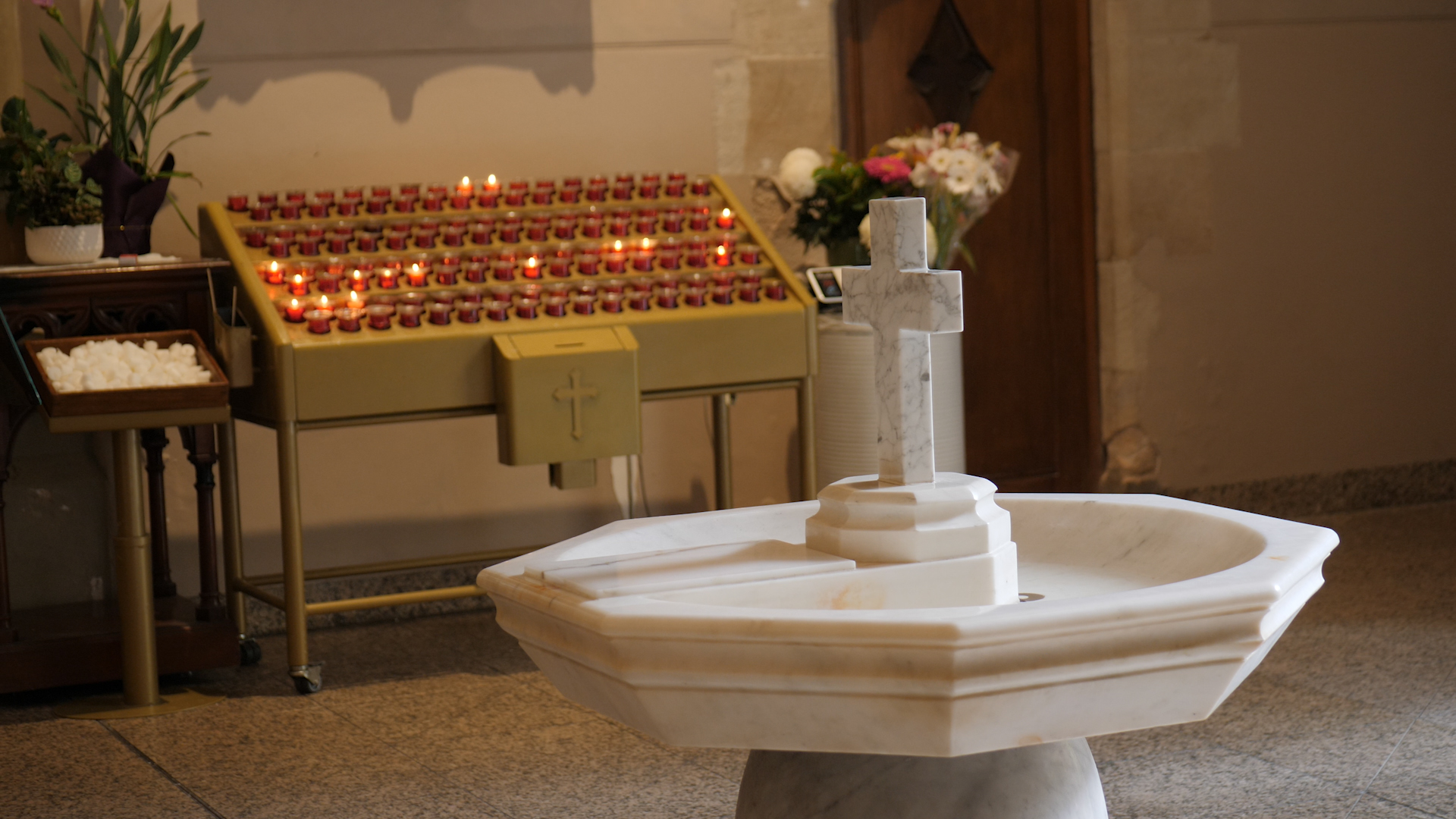Many families from the Paiyagala area, in the western province of Sri Lanka were devastated by the Boxing Day tsunami. 23,000 families were affected by the disaster, with approximately 12,000 houses either completely or partially damaged.
Five months on, images of tragedy are being replaced by images of hope and solidarity in the tsunami affected regions of Sri Lanka, as affected areas are now being rebuilt. Now that the first stage of the relief program of distributing relief goods to the needy has been completed, the reconstruction phase is being implemented.
Shelton and his family are amongst the first of the Paiyagala locals to benefit from the reconstruction phase of the Caritas relief program, moving into their newly constructed house after five months of living in a tent near their completely destroyed old home.
“It is based on the foundation of our previous home. We have been very lucky: we are just outside the buffer zone and we own our land. Therefore, we benefited from the first phase of the Caritas housing programme. Otherwise, we would be still waiting in a camp to be resettled somewhere, far from our community and village”, said Shelton.
“Caritas architects and builders did such a good job. I do not know how to thank them. After hard work for more than two months, the day I dreamt about eventually became reality!”, said Shelton.
Through Caritas Australia’s Asia Earthquake Appeal, AUD $20 million was raised through the generous donations of the Australian public. Caritas Australia has sent funds through partner organizations in the affected countries to be distributed towards various aid relief and rebuilding programs. Caritas Australia’s contribution to Sri Lanka has been administered by the Social and Economic Development Centre (SEDEC) who are then distributing funds to the various project areas around Sri Lanka.
“Caritas was able to respond very quickly because Caritas agencies were already in these countries implementing community development programs. Strong networks were already in place through which we could rapidly respond”, said Melville Fernandez, South Asia Coordinator for Caritas Australia.
Paiyagala is one of the many project areas receiving funding from Caritas. This areas lies on the stretch of coast between Negambo to Beruwala, on the islands’ south-western coast. Tsunami programs and activities in this area are being coordinated by Caritas Colombo-Sethsarana. Although this region is called the ‘Catholic Belt’, Caritas Australia and the Caritas network distribute aid to affected areas, regardless of religion. Many of the Muslims and Hindus affected by the disaster have also been helped.
Caritas is involving the beneficiaries during the processes of planning and implementation of the area. Those that are eligible for assistance under Caritas Colombo-Sethsarana’s program are all people whose houses were destroyed by the tsunami in the Western Province, with priority for assistance given to families with more than three children. single parent families, families with disabled members and elderly people living alone.
Caritas Colombo-Sethsarana has employed skilled and semi-skilled workers to repair and reconstruct the houses in their region. Funding has been used to cover the project costs such as the main structure of the houses including floors, roofs, windows, doors, as well as the provision for a toilet, shower, hand washbasin and kitchen sink.
“I used to help Caritas workers to rebuild my house. I learnt a lot on reconstruction process. I am now able to provide my neighbors with construction expertise and knowledge in order to reconstruct their houses”, said Shelton
Depending on the size of the family, various house sizes are being assigned to the affected families, which each house having to meet the recommended construction standards where the main structure has to be cyclone and minimum earthquake resistant.
“The Caritas process has been really efficient. I am today able to move into a permanent home whereas most of the tsunami affected people are still waiting under transitional shelters or even tents. And when I see my son with such a big smile on his face carrying our house keys, I do not know how to thank Caritas for its support”, said Shelton.
“Thank God, how lucky we are. From now on, I will also be able to help my relatives and friends to resettle themselves. In Sri Lanka, solidarity between people is really important. But when everybody needs helps, the solidarity system does not work very well. It will now restart, I promise”, said Shelton
“Local people are participating in the rebuilding of schools, and shelter. It is encouraging to see communities looking after themselves with our financial help,” said Melville Fernandez
To support the livelihood of the individuals in the affected areas, a loan system through cooperatives has been established as a way to allow social transformation and self-reliance following the tragedy. In the long term, Caritas Australia is working with the local people to help build housing, restore water and sanitation and to help rebuild employment opportunities.
“These plans will take 10 years to implement and Caritas Australia can assure the Australian community that all funds will be well-utilized and expenditure properly audited,” said Mr Fernandez.
Released by Caritas Australia
